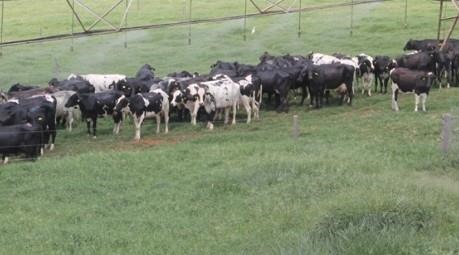By Madison McVan
Minnesota has long enjoyed its status as a state free of wild pigs, avoiding the billions of dollars of damages suffered each year by other states from invasive feral swine.
Now, Canadian “super pigs” are threatening the state, and pork producers and regulators are concerned about the destruction and disease the animals could bring if they were to establish a population in Minnesota.
Minnesota is the second-largest pork producing state in the country, generating more than $7 billion in economic activity, according to the Minnesota Pork Producers Association.
In the Canadian province of Manitoba, researchers have detected pigs roaming within 40 miles of the Minnesota border.
The Minnesota Department of Natural resources has no dedicated funding for wild pig removal and monitoring programs, and the amount of federal money dedicated to preventing the spread of feral hogs in Minnesota has decreased from $68,000 in 2017 to $25,000 in the current fiscal year.
Populations of feral swine have long occupied territory in the western and southern United States, but have expanded their reach in recent decades. In 1982, 544 counties in the southern U.S. reported established feral swine populations. By 2020, hogs lived in more than 1,900 counties in 35 states.
Wild pigs have never established a colony in Minnesota, but nearby states haven’t been so lucky. According to 2022 data from the U.S. Department of Agriculture, wild pigs were living in areas of North Dakota, Indiana, Kansas, Missouri and Michigan.
Estimates of the feral swine population of the United States vary, but the USDA approximates the current number of animals to be at least 6 million and “rapidly expanding.”

Researchers at Enetwild, a project funded by the European Food Safety Authority, wrote in 2018 that getting accurate counts of wild boar is only feasible in small habitats, in part because the traditional methods of counting animal populations — direct observation — is difficult with nocturnal animals, like wild pigs.
The USDA Animal and Plant Health Inspection Service estimates that feral hogs cause up to $2.5 billion in damages nationwide per year. The animals consume crops, destroy fencing, transmit diseases and parasites and contaminate bodies of water by wallowing and defecating.
Feral hogs are capable of contracting and spreading all of the diseases of domestic swine, including African swine fever, influenza viruses and pseudorabies.
Once feral pigs take over a territory, it’s nearly impossible to eradicate them, said Eric Nelson, wildlife damage program supervisor at the Minnesota Department of Natural Resources.
Click here to see more...